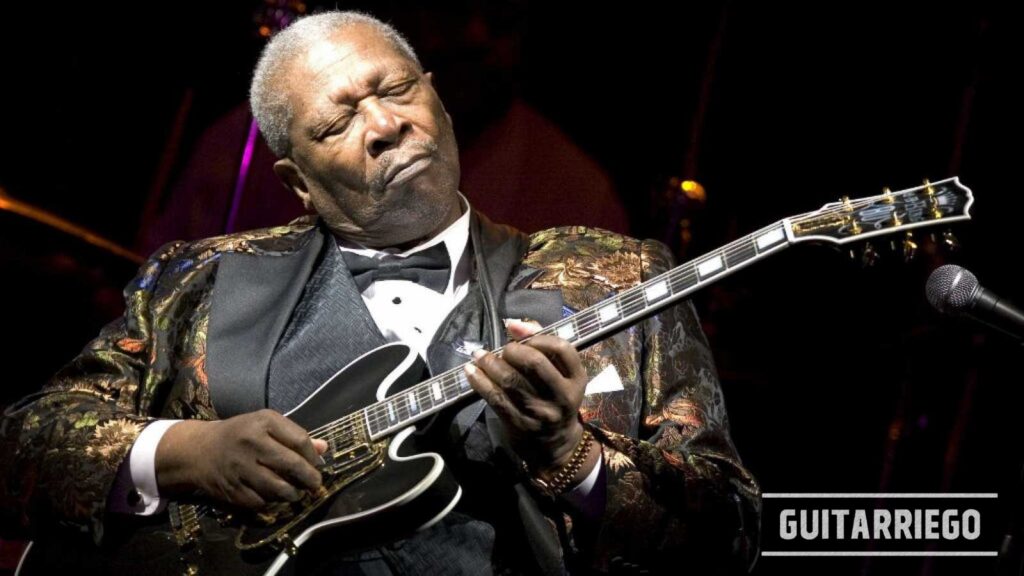Blues Scale: Pentatonic Scale, Blue Note and Major Third

The blues scale is the scale used by blues and other styles such as classic rock, made up of the pentatonic scale plus the Blue Note or blue note, and the major third can also be added to this.
Harmonic Blues Scale for Guitar
The Blues scale is widely used not only for blues, but also for other styles derived from blues such as classic Rock and Roll and even for hardrock.
This scale is formed from the pentatonic scale, to which a note called the Blue Note is added. Thus, the blues scale consists of 6 different notes, that is, it is a hexatonic scale, which are the sum of the 5 notes of the pentatonic scale plus the added note, the blue note.
The Blue Note on guitar
The blue note is the diminished fifth or the augmented fourth of the minor pentatonic scale. Thus, the blue note, added to the pentatonic scale, gives the blues its unique sound and melodic imprint.
Blues scale positions
Below you have all the patterns or positions. As with any other scale, you must learn one position at a time. Once you know and understand the 5, and place them well along the fingerboard, try to connect the different positions with each other.
The red notes are the tonic and the blue are the blue notes, finally the green ones are the remaining notes of the Blues scale or minor pentatonic.

Once you manage to connect the 5 positions, look to see the fretboard as one, beyond the different positions.

How to practice blues scale patterns?
The blues scale can be thought of as the pentatonic scale but adding the blue note. The blue note is a passing note, not a resting note. In other words, we will go through it, but we must not not rest on it.
To learn it, play the positions at a low tempo, around 90 beats per minute. First learn to play them in succession, and then do it in ascending and descending triads.
Blues scale tablature and score in A minor in position 1 played up and down:
The Blues scale in A minor in position 1 played in ascending triads:
Blues scale in A minor in position 1 played in descending triads:
How many Blue Notes are there?
Although the Blue Note or Blue note is considered the fourth increased or the fifth diminished, there is also another very important note in Blues, which is the major third.
One of the main blues progressions is the 12 Bar Blues. In this structure, it is played on major seventh chords, using the first, fourth, and fifth. That is, it is played between major chords and the minor pentatonic scale – added to the blue note. For this reason, the major III is also played. If you add the major third, there is a scale as follows along the fretboard.

At the top in the box, position 1 and part of 2 are shown, which are the most used positions, but not the only ones.
Classic Blues Phrases with Blue Note and Major Third
12 Bar Blues or Blues of 12
A classic progression in blues Blues is the so-called 12 Bar Blues or 12 bar Blues, the best known are:
Notes on A:
A7 D7 A7 A7 | D7 D7 A7 A7 | E7 D7 A7 E7
Grades
: I7 IV7 I7 I7 | IV7 IV7 I7 I7 | V7 IV7 I7 V7
It can also be played with major chords combined with sevenths, an example below.
Notes in A:
A D A A | D D A A | E D A E7
Grades:
I IV I I | IV IV I I | V IV I V7
Blues Scale, Blue Note, 12 Bar Blues, Major Chords
As you will see, it is a lot of information for a single guitar lesson. Take the time to learn each point thoroughly before jumping to another.
Now study and practice!
Related Post: Guitar Scales for Beginners – Quick and Easy to Learn.
You can share opinions or also chat about this and more with other musicians in our comments section.
For more information on the guitar, visit Guitar Quarter web site.






